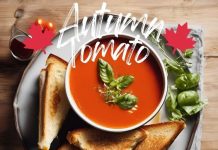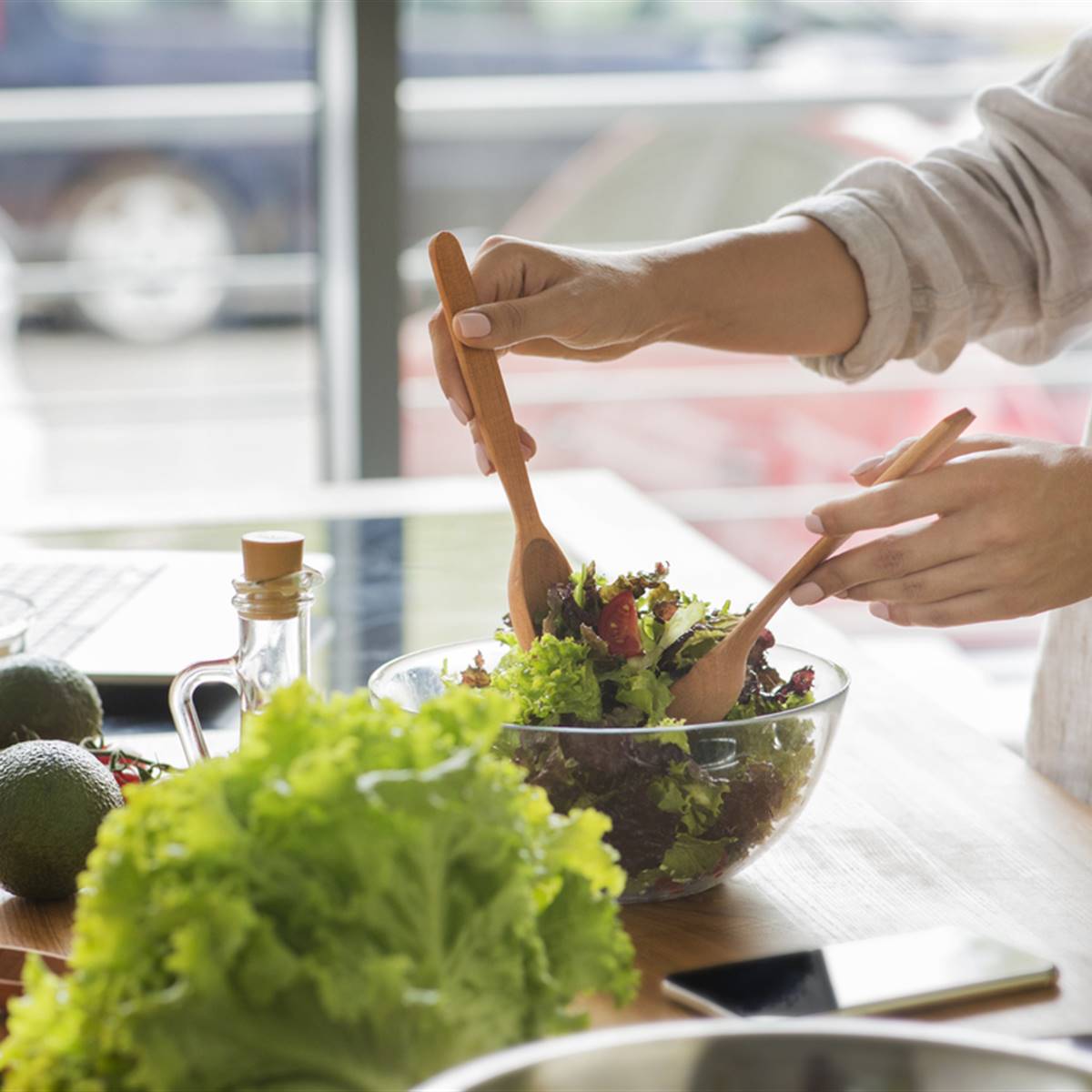Keeping glucose stable is critical for the brain to function properly. With these dishes your mind will work 100% while enjoying the taste.

Do you suddenly feel like you’re having trouble concentrating or thinking slower? Maybe you’re suffering from a low blood glucose that affects your mind. Feeding the brain well is essential for it to function properly. However, to avoid these drops in blood glucose, the ideal is not to take sugar or substitutes – it can lead to a lethargic effect – but to introduce slow-absorbing carbohydrates into the diet. We tell you how your intellectual performance can change with small changes in diet and we give you 4 recipes that will nourish your brain properly and avoid glucose crashes.
THE BRAIN NEEDS A BALANCED SUPPLY OF GLUCOSE
The brain is part of the organism and, therefore, what is good for health in general, is also good for it. Nourishing yourself optimally is the best way to ensure that your brain is functioning at full capacity.
In any case, certain elements are essential for this body. The most important nutrient for the brain is glucose: it consumes it in greater quantity than any other organ (it spends between 20% and 30% of the energy used by the body).
Unlike other cells that can convert fats or proteins into energy, neurons can only feed on sugar in the blood in the form of glucose.
However, this does not mean that the more glucose, the better for the brain, on the contrary, the rate must be as balanced as possible.
Research proves that intellectual performance is maximized by an even supply of glucose to the brain and that low blood sugar causes difficulty concentrating, irritability and even dizziness.
The balance of the blood sugar level depends mainly on the type of carbohydrates that are consumed in the diet. To avoid sugar crashes, the key is to prioritize slow-absorbing carbohydrates (whole grains and pastas, legumes…), which take longer to digest and release energy more constantly and gradually than refined ones (white bread, processed cereals and sugar).
If you go from one snack or sugary drink to another, refueling as you consume, chances are that your blood sugar level will go down and up like a roller coaster and so will your concentration and mood.
TOO MUCH GLUCOSE CAUSES LETHARGY
Although a deficient intake of carbohydrates (or an abnormal metabolism of them) can cause hypoglycemia and its associated symptoms (nervousness and irritability followed by tiredness and drowsiness), shortly after very high sugar intakes, the blood glucose level is also lower than before eating (reactive hypoglycemia), with the consequent feeling of tiredness and poor performance.
Therefore, if sweets are not accompanied by protein foods, although they cause a first “euphoric” effect, then they redouble the feeling of lethargy.
In general, the brain is protected from relying on the last thing it has eaten, but only up to a point.
Some neutrotransmitters (chemical messengers that make brain activity possible and control body temperature, mood, or appetite) are very sensitive to diet. That is, neurotransmitters are synthesized from amino acids that the body incorporates with food. Serotonin, for example, which produces relaxation, tranquility and sleep, is synthesized from tryptophan, present in rice and milk, nuts, some fruits such as kiwi and banana…
It is only a small group of neurotransmitters between 30 and 40 that exist, but they are mainly affected by carbohydrates and proteins, since almost all of them are made from proteins.
- To avoid blood glucose drops and thus maximize intellectual performance, slow-absorbing carbohydrates (whole grains, lentils, beans, nuts, seeds, fresh fruit and vegetables) are preferable to refined carbohydrates (sugar and substitutes) and those made with white flour (white bread).
- It is important to consume protein-rich foods, since almost all neurotransmitters are made of them. Good sources of plant protein, such as legumes and whole grains, can be chosen. If you opt for animal proteins, then it is better to eat lean meat or fish. Likewise, it is advisable to combine proteins with carbohydrates: cereals and fruit with nuts or seeds, and starches (potatoes, bread, pasta or rice) with lentils, beans or tofu.
- Another relevant fact is that many studies have shown that breakfasts rich in carbohydrates substantially raise the amount of tryptophan and, therefore, also that of serotonin.
4 RECIPES TO CONTROL GLUCOSE
Taking into account all these factors, we propose four very tasty recipes with which to keep your brain well nourished.
BRAISED VEGETABLES WITH PEPPER CHIMICHURRI
INGREDIENTS (FOR 4 PEOPLE):
- 2 carrots
- 1 zucchini
- 200 g Brussels sprouts
- 200 g pumpkin
- 2 small onions
- 1 red bell pepper
- 1 tablespoon dried oregano
- 2 chilli peppers
- 1/2 bunch chives
- 1 tablespoon whole sugar
- 2 tablespoons sherry vinegar
- 150 ml olive oil
- iodized salt
- sea salt
PREPARATION (15′ + 20′ COOKING):
- Carefully clean the vegetables and peel the pumpkin, carrots and onion (keeping the root button so that they do not disassemble). Cut the carrots, pumpkin and zucchini into wide sticks and the onion, in eighths, without the layers coming off. Remove the outer leaves from Brussels sprouts and make a small cross-shaped cut at its base.
- Heat a casserole with three tablespoons of oil and boil the onions and carrots. Cover and wait a couple of minutes, then add the Brussels sprouts and brase, covering the casserole again, about five more minutes. Finally add the pumpkin and zucchini, salt and pepper, sprinkle with sugar and pour a little water. Cover and continue cooking for about 10 more minutes, depending on whether you prefer the vegetables to the point or a little more cooked.
- While the vegetables are being grilled, mix the rest of the olive oil with the sherry vinegar, dried oregano, salt, a couple of chillies, and finely chopped chives and red pepper. You can also prepare the sauce in advance so that it gains in flavor. Serve the vegetables with the sauce apart, so that each diner dresses them to taste.
NUTRITIONAL INFORMATION:
- Calories: 283
- Carbohydrates: 10 g
- Protein: 3 g
- Fat: 25 g
- Cholesterol: 0 mg
ORANGE MILLET CROQUETTES
INGREDIENTS (FOR 4 PEOPLE):
- 180 g millet
- 200 g carrots
- 1 orange (grated skin)
- 50 g chopped toasted almonds
- 2 eggs (you can replace them with chickpea flour)
- 100 g wholemeal flour
- 100 g wholemeal breadcrumbs
- 2 garlic cloves
- 1 strip of wakame seaweed
- Chopped parsley
- olive oil
- iodized salt
PREPARATION (15′ + 25′ COOKING):
- In a low casserole pour three cups of water for each one of millet. Add a little salt and a piece of wakame seaweed to provide iodine and minerals. Cover, heat and when the water starts to boil lower the heat and let cook for about 20 minutes.
- Once the millet is cooked, remove the seaweed and finely chop. Add again and add the rest of the ingredients: grated carrot, chopped garlic, grated orange peel, almonds and parsley. Stir to integrate them until there is a consistent dough that allows to form balls of about 2 cm in diameter.
- Batter the balls in wholemeal flour, egg and breadcrumbs, and fry them in hot olive oil. Let dry on absorbent paper and serve.
NUTRITIONAL INFORMATION:
- Calories: 466
- Carbohydrates: 62 g
- Protein: 15 g
- Fat: 17 g
- Cholesterol: 157 mg.
BEAN STEW
INGREDIENTS (FOR 4 PEOPLE):
- 500 g cooked beans
- 200 g onion
- 300 g red peppers
- 400 g strong red tomato
- 20 g almonds
- 4 thin slices wholemeal bread or rye bread
- a sprig of parsley or bay leaf
- 1 head garlic
- white wine
- olive oil
- salt
PREPARATION (15′ + 20′ COOKING):
- Peel the onion and chop it very finely; Cut the pepper into short and wide strips, and blanch the tomato for a few seconds in boiling water, let cool, peel it and cut into slices, removing the seeds.
- Sauté the onion in oil, add the salt, bay leaf and, as soon as it softens and takes color, a head of garlic and peppers. You can add celery and cut zucchini, if you feel like adding more vegetables. Continue cooking and after about 10 minutes add the tomato over high heat. When its natural water softens and evaporates, pour the wine and let it reduce. Cover with a little water and then add the cooked beans and parsley branch. Stew over low heat.
- In a mortar chop a clove of garlic and a handful of toasted almonds. Pour into the stew, which can already be served with a few slices of wholemeal bread or rye toasted in the oven and, optionally, spread with garlic and oil.
NUTRITIONAL INFORMATION:
- Calories: 510
- Carbohydrates: 82 g
- Protein: 33 g
- Fat: 5 g
- Cholesterol: 0 mg
OATMEAL AND COTTAGE CHEESE CAKE
INGREDIENTS (FOR 4 PEOPLE):
- 100 g oat flakes
- 200 g vegetable cottage cheese
- 3 eggs
- 4 tablespoons honey
- 50 g butter
- 50 g brown sugar
- 1 teaspoon cinnamon powder
- 80 g split walnuts
PREPARATION (10′ + 30′ COOKING):
- Melt the butter and mix with brown sugar and oat flakes. Pour the dough into a round mold about 20 cm in diameter and press well against the bottom.
- On the other hand, mix the honey with the cottage cheese, beating well, and when the dough acquires a homogeneous texture add the three beaten eggs with a teaspoon of cinnamon powder. Pour the preparation into the previously prepared pan and bake for about 30 minutes at 160 ºC.
- After half an hour, check the cooking by pricking with a long wooden toothpick in the central part. If it comes out dry, the cake is already cooked. Then add the chopped walnuts on top.
- Unmold the cake and paint its surface with a little gelatin or with a light syrup. You can already serve it.
VARIANTS:
It can also be baked individually, using small metal molds or rings on brown paper.
You can mix the cheese with pumpkin, carrot or also with jam.
NUTRITIONAL INFORMATION:
- Calories: 544
- Carbohydrates: 47 g
- Protein: 18 g
- Fat: 31 g
- Cholesterol: 278 mg.
OTHER NUTRIENTS THAT HELP THE BRAIN
Although all nutrients are necessary, some exert an especially positive effect on the brain and nervous system. That is why it is necessary to regularly eat vegetables, fresh fruit, nuts and seeds. Also, some simple dietary habits help the brain function optimally. Taking them into account improves their performance.
- Omega 3. Research in recent years has also confirmed that omega-3 fatty acids are a key component in the development and proper functioning of the brain. Many studies point to its effectiveness in the treatment of depressions, attention deficits, dyslexia and some cognitive deficiencies. The foods richest in omega-3s are oily fish, such as salmon or tuna, and nuts, especially nuts.
- To increase the supply of omega-3 fatty acids, essential for the structure and functioning of the brain, flaxseed, hemp, pumpkin, sunflower and sesame can be ground and sprinkled on cereals, soups and salads.
- B vitamins. Nutritional deficiencies of some B vitamins are associated with irritability, mental confusion, concentration difficulties and even depression. These vitamins are folic acid, thiamine (vitamin B1), niacin (vitamin B3), pyridoxine (vitamin B6) and vitamin B12. Ensuring their contribution is basic,
- Iron. It is the nutrient that has a greater influence on attention processes (concentration, learning, memory and mental efficiency).
- Iodine. Iodine is essential for the proper functioning of the thyroid gland, which in turn is essential for mental health. A low (or very high) intake of iodine can cause hypothyroidism, which manifests itself in low energy levels, forgetfulness, personality changes, depression, or anemia. To prevent its deficiency, iodized salt can be consumed.
- Selenium. More and more studies highlight the influence of selenium on mood, A recent study shows that a diet rich in this mineral contributes to a clearer mind and greater self-confidence. Cereals, mushrooms and asparagus are good sources of selenium.
- Lecithin. Lecithin is the best source of phospholipids, basic for neuronal receptors. To improve memory capacity, then, you can add a tablespoon of lecithin granules to cereals or eat organic eggs.
- Another good idea is to dress salads and vegetables with cold-pressed seed oils, such as hemp.
- We must minimize the consumption of fried foods, processed foods and saturated fats.








